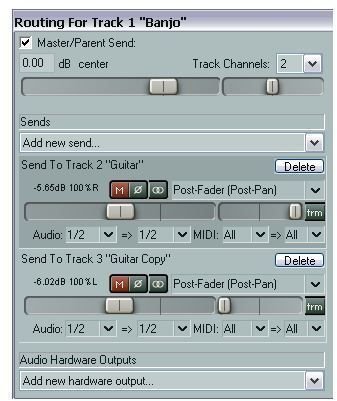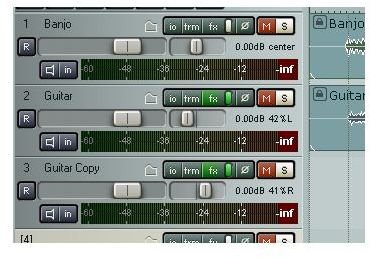How to Fill Out a Thin Mix - Get An Audio Mixing Sense With These Tips and Tricks
One plus One equals Five
In this little exercise we’re going to take a max of two instruments and turn it into five. In REAPER you can do this quite easily using that program’s channel splitting and routing capabilities. If you’re using another DAW it should still be possible to achieve this outcome, but you’ll need to create a lot of extra tracks and use one or more likely two busses.
The trick is to turn one of our instruments into two and the other one into three, then spread them neatly across the panning spectrum, from left to right. Let’s put some flesh on these bones. We’ve got a banjo and a guitar.
First decide which one you want to feature more. Let’s say it’s the banjo. In this case, then the guitar is the secondary instrument. We’ll work on that first.
Creating the Effect
Select the track containing your secondary instrument and follow the procedure shown in Mixing Sense 5: Brightening a Dull Instrument. Your track setup will now be similar to that shown in the first illustration. In this example, the original guitar track is panned about 40% left and the copy about 40% right. We’ll assume that you’ve done the same.
Now for the more featured instrument, our banjo.
Pan it dead center. Open the routing window for this track and create two Post-Fader/Post Pan sends, one to each of your guitar tracks. In each case, start with a level of about -5dB and pan the send the opposite side to the track to which it is being sent. Thus, the send to the original guitar track will in this example be panned 100% right and the send to the copy track will be 100% left. This is shown in our second illustration.
Play the song. You’ll notice how much fuller it sounds, without loss of clarity or separation. As you play it tweak any of your settings to get the best results.
Images

This post is part of the series: Develop Your Mixing Sense
A series of articles intended to help you develop your mixing sense. Includes tips and tricks on finding the right balance in your mix, fleshing out thin sounds and more.
